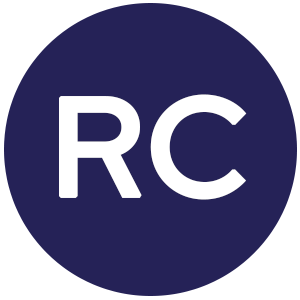Knowing which Real-time Location System (RTLS) to choose for your hospital can be challenging because a plethora of options have emerged to help healthcare facilities keep track of their assets.
These RTLS technologies incorporate two basic components: tags and readers. But how those tags and readers are deployed and powered, in addition to the total cost of ownership of such systems, can vary widely.
In this post, you’ll learn about the most common RTLS and five questions you should be asking to determine which RTLS solution will work best for your hospital.
The most common RTLS solutions available to hospitals:
-
- Wi-Fi RTLS came of age as hospitals adopted Wi-Fi technology for a variety of business purposes. Leveraging Wi-Fi for RTLS seemed like a simple solution however without significant investment in additional hardware Wi-Fi could only deliver ‘zone’ level accuracy and suffered from floor-hopping, showing assets on completely different floors.
-
- Infrared, ultrawideband, and ultrasound RTLS are some of the common legacy technologies deployed in the service of hospital asset management. Added to the existing wireless topology in an attempt to improve location accuracy, adding these elements resulted in an over complication of the supporting network infrastructure. Each room now requires its own infrared, ultrawideband, or ultrasound reader in order to provide ‘room level searching’ – and sometimes even multiple readers, all resulting in significant up-front costs for construction and infrastructure.
-
- Radio-frequency identification (RFID) RTLS can be set up in different ways:
-
- Passive RFID systems use non-powered tags that are activated when they receive a signal from a reader. This kind of system works on the ‘last known location’ model, it’s fine letting you know if an asset passes through a doorway but it can’t tell you specifically where it is after that – or where it goes until it crosses another RFID enabled threshold. Think about a book in a library – the barcode system lets you know if it the book checked in or checked out, but not much beyond that.
- Active RFID systems use battery-operated tags that independently send signals to a reader. An active RFID system can usually show you approximately where a tagged asset is at any time, assuming the tag remains within the reader’s range. In comparison to passive RFID active tags are much substantially more expensive but the network will be significantly cheaper.
- Intelligent RFID systems operate similarly to active RFID systems, but with a key . Intelligent RFID tags are programmed to send signals to readers at specific intervals – not continuously, like active RFID tags – and therefore don’t require as much expensive data storage. Like active RFID systems, intelligent RFID systems require battery replacement and other maintenance efforts.
-
- Radio-frequency identification (RFID) RTLS can be set up in different ways:
5 questions to ask when choosing an RTLS solution for your hospital
It’s important for hospitals to ask good questions – of themselves and their potential technology partners – to ensure they choose the right RTLS for their needs. We recommend considering the following:
1. What business problems do you want to solve with an RTLS?
Hospitals have complicated floorplans with hundreds of rooms spread over multiple floors. Do you want to track thousands of mobile medical devices that move daily, be able to find equipment quickly and efficiently, and be able to analyze how each device is being used? Having a system that knows the difference between a patient room, a hallway, a stairwell or a storeroom will provide substantial value..
2. What is the installation and start-up cost?
Legacy technologies like infrared, ultrawideband, and ultrasound RTLS can require enormous outlays to run cables and install equipment. These systems require a device (or several devices) in every room to achieve room-level accuracy.
3. What is the opportunity cost of installation?
In some cases, rewiring and installation may require the closure of patient rooms. Factor this into the way you calculate up-front costs.
4. What is the total cost of ownership?
After installation, different systems will require different levels of upkeep over time. Consider routine maintenance and battery costs in your decision.
5. How actionable is the data the system produces?
Some RTLS can track thousands of assets at a time – but if the tracking is only 75 percent accurate, or the system doesn’t give you the ability to track assets throughout (hallways, supply rooms etc..) your facility, it’s difficult to use it to make sound decisions.
It’s not uncommon for hospitals to spend a lot of money on an RTLS solution only to be disappointed by its performance and return on investment down the road. Understanding all of the options available to you and asking questions rooted in your hospital’s business needs are the best ways you can avoid that fate and benefit your bottom line.
At Cognosos, we welcome your questions about how our RTLS solutions can help you achieve room-level accuracy, minimal disruption, and proven cost savings. Contact us today for more information.



